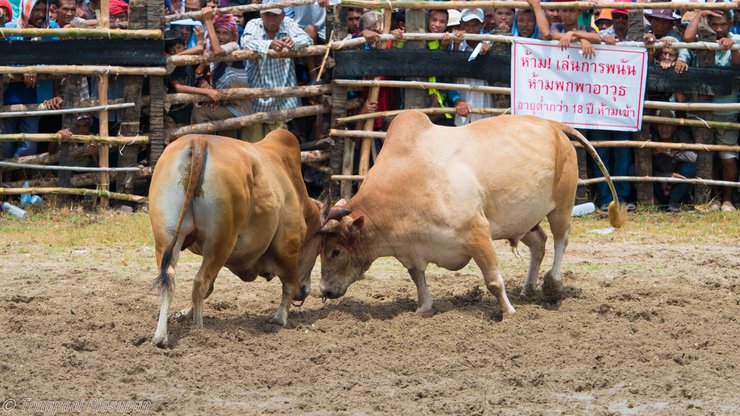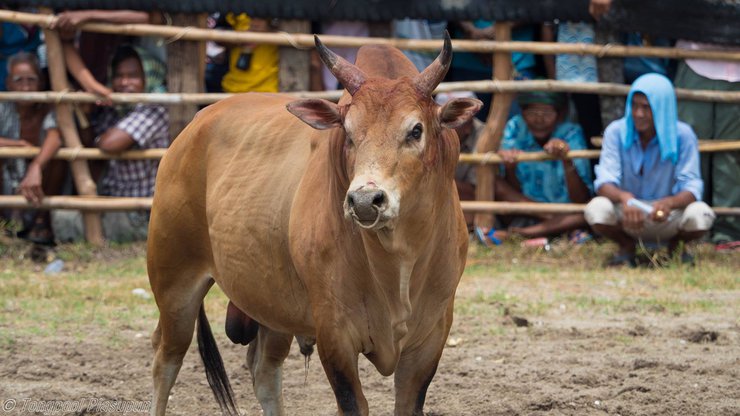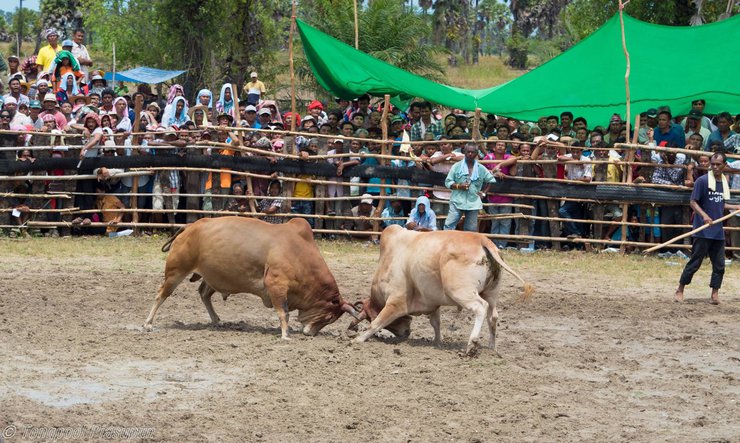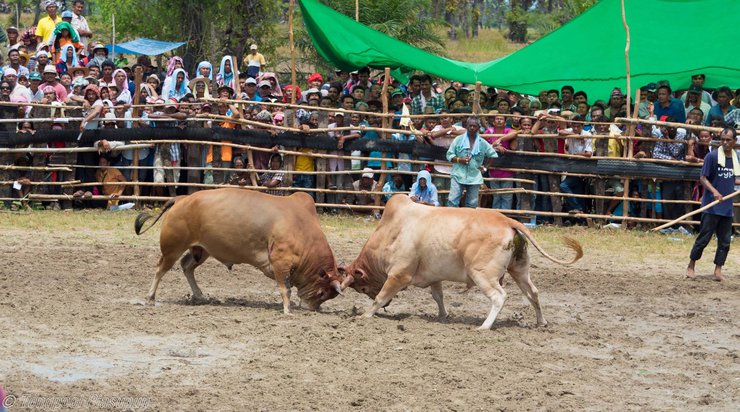Bullfighting, also known as chon wua, is a traditional sport in southern Thailand. While its popularity in Thailand may have originated from the practice of cattle rearing among Muslims, it is also found in the northeastern region. This form of entertainment can be observed as far as Laos. The competition involves releasing strong young bulls from a pen, allowing them to charge at each other. Using their strength and horns as weapons, the bulls engage in a fierce battle. Both animals must stand their ground and fight without retreating to claim victory. The majority of spectators who gather around the bullfighting ring do so to witness the triumph and strength of the winning bull. Some choose to admire the physical beauty of the bulls, animals that are deeply intertwined with their daily lives. However, most engage in gambling to heighten the excitement and support their preferred bull. The bulls used in these competitions are typically muscular and robust. Their horns, head, body, and front legs must be strong to withstand the head-on collisions that produce a resounding thud. When one bull refuses to back down or flee, they continue to clash until one becomes exhausted or injured, ultimately leading to defeat. Bullfighting arenas typically consist of a wide, earthen field enclosed by a pen or an earthen embankment.
Based on https://en.wikipedia.org/wiki/Wikipedia
During my trip to Phatthalung last May, I had the opportunity to witness a bullfighting competition for the first time. Unlike the bullfighting I had seen in Madrid and Barcelona, where the matador's skill in dodging the bull's charges and delivering the final blow was the focus, this event featured trained bulls pitted against each other. Owners would concede defeat if their bull was losing, preventing serious injuries and allowing for a quicker return to the ring. However, in some cases, bulls that consistently lost might be sold to butchers for meat.
The opening of each bullfighting arena not only brings joy to the bull owners and spectators, but also invigorates local businesses. People from both near and far flock to witness the spectacle, filling the area with cars and motorcycles. This influx of visitors creates a thriving market for vendors selling a variety of goods, including food, clothing, and even bundles of grass for the bulls. Consequently, the bullfighting sport is inextricably linked to the local community and enjoys immense popularity.
However, there are different perspectives from some parts of society who see bullfighting as animal cruelty or even as a source of vice. It is concerning that bullfighting, which is an old folk culture, may disappear in the future if the government or relevant parties do not seriously revive and support it. For example, supporting the legalization of bullfighting stadiums more widely and, in particular, supporting tourism. If we plan our marketing well, we may get a lot of money from tourists, not unlike bullfighting in Spain.
















Bittersweet
Friday, September 27, 2024 10:21 AM





















